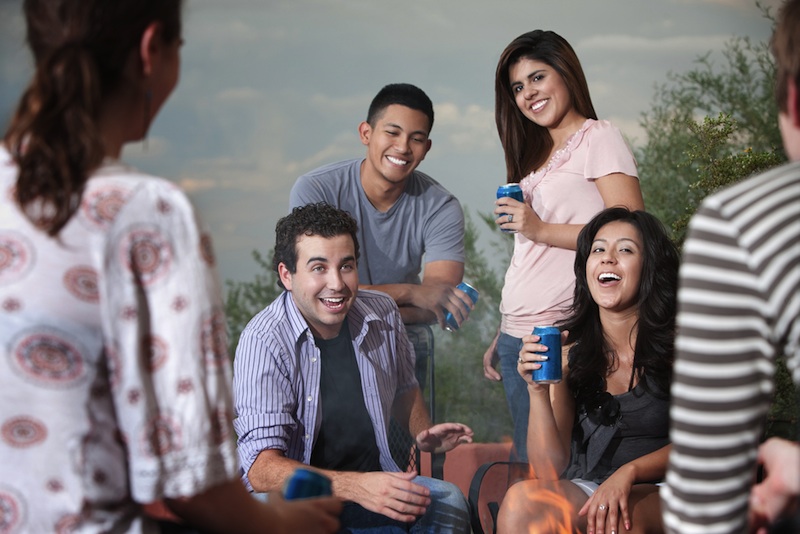How the Brain Remembers Your Sister's Cousin's Boyfriend

Quick, what's your oldest cousin's daughter's husband's name? Remembering social ties like this is a tough task for the brain — so it cheats.
New research finds that the brain takes shortcuts in remembering the ties in a person's social networks. The trick is not remembering every individual link separately. Rather, the brain remembers "rules" to help it quickly reconstruct individual connections.
“Humans are able to manage big, sprawling, complicated social networks essentially because we don’t remember big, sprawling, complicated social networks," study researcher Matthew Brashears, a sociologist at Cornell University, said in a statement. "We remember simplified, regular structures that bear a reasonable similarity to what those networks look like."
The social brain
Social relationships are important for health and happiness. Their size has even been linked to the size of certain brain regions. Researchers aren't yet positive whether people with bigger social brain structures build broader social networks or whether having more friends boosts brain size, but the relationship reveals the importance the brain puts on keeping up ties.
Brashears was more interested in looking at the brain's "software." Instead of examining brain structure, he wanted to know how the brain organizes information to deal with the dizzying array of relationships even a small group of people can form. [10 Amazing Facts About the Brain]
To do so, he presented 197 female and 104 male participants with one of four vignettes about the social networks of 15 people. In some cases, the vignettes contained strong cultural cues in the form of kin labels such as "sister," "brother" or "mother." In other cases, the people were connected by the more vague label of "friends."
Get the world’s most fascinating discoveries delivered straight to your inbox.
Some vignettes also contained relationships called triadic closures, in which three people all know each other. In others, the networks were long chains of relationships that couldn't be reduced down to triadic friendships.
Remembering relationships
Participants read the vignettes, did an unrelated memory task to clear their minds, and then had to try to recreate the social network they'd read about from memory. They were told they'd be paid for correct answers. In fact, all participants were paid the same amount, but the researchers wanted them to be motivated by the money to do their best at the task.
The results showed an intriguing pattern: People did worst when trying to remember a social network defined by strong kinship connections but without any triads, getting an average of half of the relationships correct. But they did best when reproducing a network with both strong kinship connections and triads, averaging about 73 percent correct.
That's all the more impressive, because the kinship and triad networks contained twice the number of relationships as did the kinship-without-triad networks. Using the two clues together seems to help the brain grasp the complex relationships.
"Absolute processing capacity of the brain is often not as important as efficiency," Brashears wrote today (March 21) in the journal Scientific Reports. The ability to use these shortcuts may be adaptive, he said. And failure to understand the rules might play into disorders that involve social difficulty.
"We may have a better ability to understand social anxiety and autism spectrum if we understand how we're compressing and reconstructing social information using these mechanisms," Brashears said.
Follow Stephanie Pappas on Twitter and Google+. Follow us @livescience, Facebook & Google+. Original article on LiveScience.com.

Stephanie Pappas is a contributing writer for Live Science, covering topics ranging from geoscience to archaeology to the human brain and behavior. She was previously a senior writer for Live Science but is now a freelancer based in Denver, Colorado, and regularly contributes to Scientific American and The Monitor, the monthly magazine of the American Psychological Association. Stephanie received a bachelor's degree in psychology from the University of South Carolina and a graduate certificate in science communication from the University of California, Santa Cruz.


